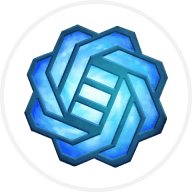Stella, cunoscută anterior ca Alpha Finance Lab, este un protocol care oferă strategii cu efect de levier la preț de împrumut fără dobândă. Prin introducerea Stella se abordează nevoia unui sistem eficient de levier în spațiul finanțelor descentralizate (DeFi). Oferind lichiditate profundă și o bază solidă, Stella își propune să ofere utilizatorilor oportunități de levier îmbunătățite într-o manieră descentralizată.
Ce este Stella
În prezent, ca rețea de testare, Stella este un protocol DeFi conceput pentru a oferi costuri de împrumut fără dobândă. Tokenul utilitar al platformei, ALPHA, joacă un rol vital în oferirea utilizatorilor acces on-chain la o gamă variată de strategii cu efect de levier. Pe lângă împrumuturile fără dobândă, fondurile de creditare Stella vor genera randament pentru creditori, creând oportunități pentru aceștia de a câștiga dobândă pentru tokenii lor.
Echipa Stella
Stella (anterior Alpha Finance Lab) se mândrește cu o echipă de produs de bază talentată. Tascha Punyaneramitdee conduce proiectul ca șef de proiect, cu experiență anterioară ca șef de strategie la Band Protocol, manager de produs la Tencent și analist pentru investiții bancare la Jefferies. Nipun Pitimanaaree servește ca Tech Lead, aducându-și expertiza în calitate de fost Chief Research Officer la OZT Robotics. În cele din urmă, Arin Trongsantipong deține poziția de Product Lead, cu roluri anterioare ca inginer software la SCB 10X, SCBC și Cleverse.
Cum funcționează Stella
Protocolul Stella cuprinde două componente cheie: Stella Strategy și Stella Lend, oferind oportunități distincte pentru utilizatori:
- Stella Strategy: Strategii au acces la o gamă variată de strategii cu efect de levier cu împrumuturi fără dobândă. Prin participarea la Stella Strategy, strategii pot câștiga randamente din pozițiile lor cu efect de levier. Randamentele generate de Stella Strategy sunt împărtășite cu creditorii, permițându-le și acestora să beneficieze de performanța strategiei.
- Stella Lend: Creditorii pot contribui cu activele lor la fondurile de creditare de pe Stella și pot câștiga randamente.
Tokenul nativ Stella: ALPHA
Tokenul ALPHA servește ca token utilitar în inima ecosistemului Stella, oferind o gamă largă de servicii și beneficii. Cu o aprovizionare totală de 1 miliard de tokeni, lansarea inițială a înregistrat 174,1 milioane de tokeni introduși în circulație. De-a lungul timpului, majoritatea tokenilor au fost emiși și ajung în mod constant în aprovizionarea totală.
Cazuri de utilizare ALPHA
Tokenul ALPHA joacă un rol crucial în cadrul protocolului Stella, oferind o gamă largă de cazuri de utilizare pentru utilizatorii săi. În primul rând, servește drept monedă de tranzacționare pentru creditori, debitori și alte funcții on-chain în cadrul protocolului. În plus, deținătorii ALPHA își pot miza tokenii pentru a primi recompense sub formă de taxe de protocol și tokeni din proiectele incubate anterior. În plus, deținătorii de tokeni ALPHA câștigă și drepturi de guvernanță, permițându-le să participe activ la conturarea viitorului protocolului.
Deținerea unui anumit volum de tokeni ALPHA poate debloca privilegii suplimentare, cum ar fi accesul la vânzările de tokeni. Pe măsură ce protocolul Stella continuă să evolueze, cazurile de utilizare pentru ALPHA sunt de așteptat să se extindă.
Distribuția ALPHA
ALPHA este distribuit după cum urmează:
- 10 la sută: vânzare publică
- 5 procente: fond de lansare
- 20 la sută: minarea lichidității
- 19,5 la sută: echipă și consilieri
- 10,83 la sută: vânzare privată
- 34,67 la sută: contribuitorii ecosistemului Stella
Ce rezervă viitorul pentru Stella
Stella prevede un viitor în care stakerii vor câștiga mai multe comisioane pe măsură ce platforma devine mai populară și pozițiile cu efect de levier generează randamente mai mari. Pe măsură ce peisajul DeFi continuă să evolueze, Stella își propune să redefinească modul în care funcționează platformele DeFi cu efect de levier prin stabilirea unui sistem de levier robust. Procedând astfel, Stella își propune să remodeleze modul în care utilizatorii interacționează cu strategiile cu efect de levier și să deblocheze noi posibilități pentru ecosistem.



















Rețele sociale